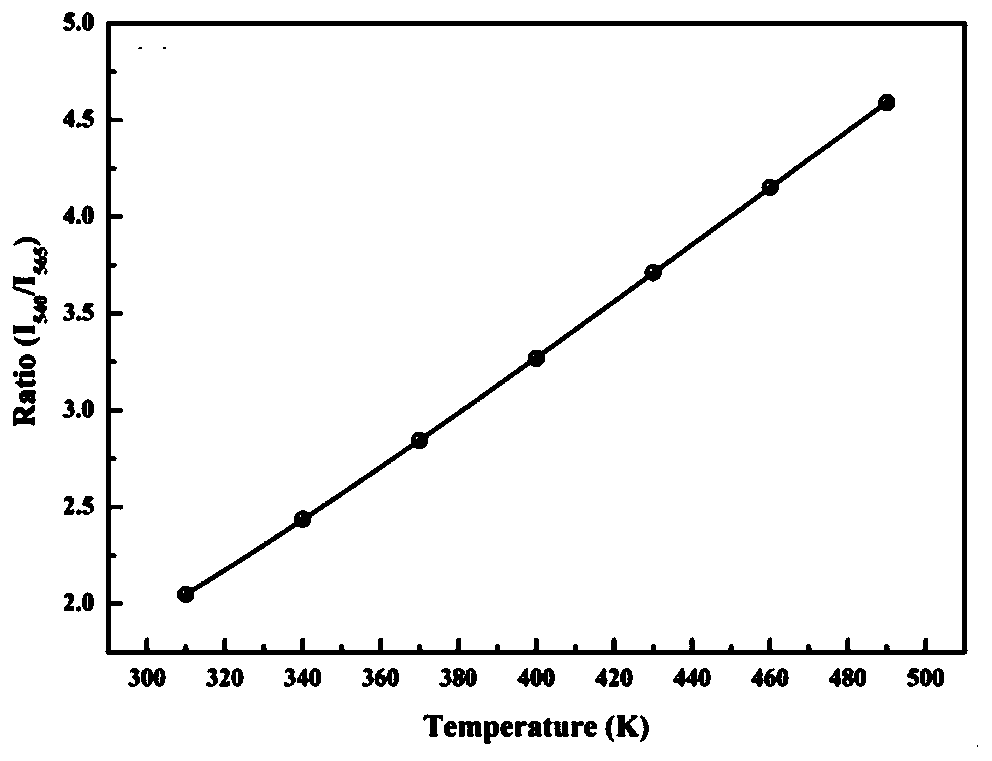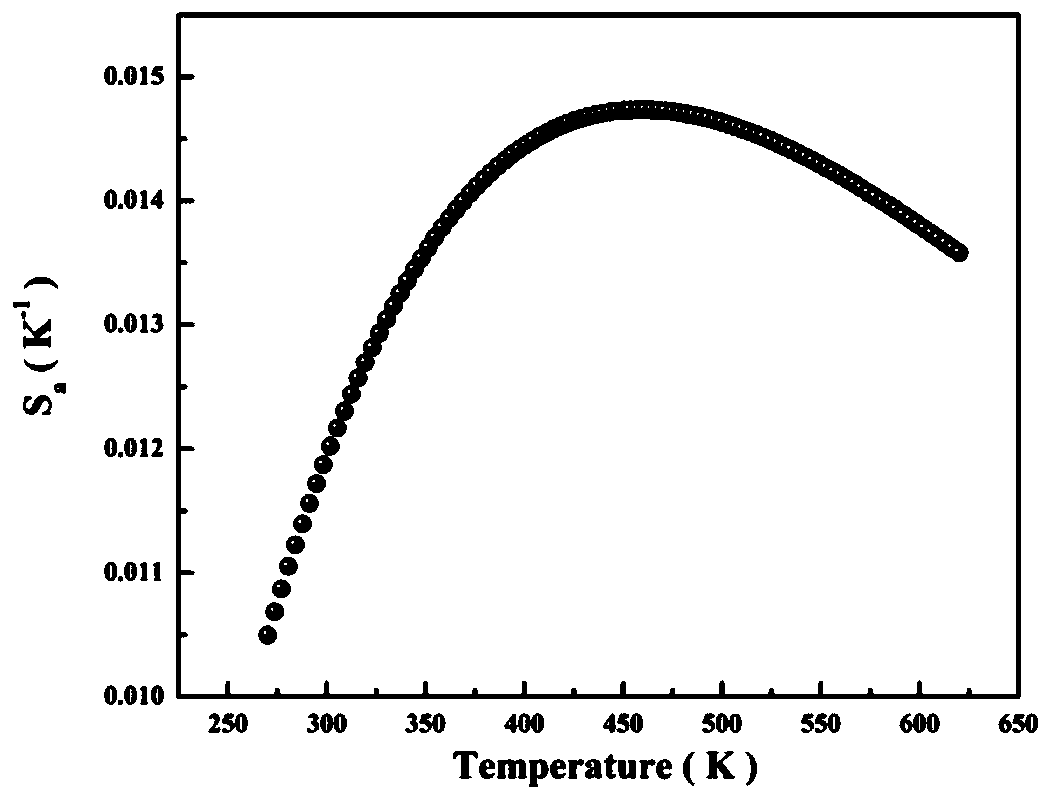Method for preparing ceramic joint with temperature detection function by utilizing rare-earth doped oxide glass
A technology of oxide glass and rare earth doping, applied in the field of ceramic joints, can solve the problems of large residual stress of ceramic joints, difficult temperature monitoring, etc., and achieve the effect of enhancing monitorability, safety, and reliable connection
- Summary
- Abstract
- Description
- Claims
- Application Information
AI Technical Summary
Problems solved by technology
Method used
Image
Examples
specific Embodiment approach 1
[0025] Specific embodiment 1: The method of this embodiment uses rare earth doped oxide glass to prepare a ceramic joint with temperature detection function, which is carried out according to the following steps:
[0026] 1. Preparation of rare earth doped oxide materials
[0027] 1) Weigh the rare earth chloride and matrix material chloride according to the stoichiometric ratio, dissolve in water and stir at room temperature, adjust the pH value of the solution to 10-13 with 2-5mol / L sodium hydroxide to obtain a white turbid solution ;
[0028] 2) Move the white turbid solution to a hydrothermal reaction kettle, where the volume filling degree of the reaction kettle is 70%, then place the reaction kettle in a thermostat, and react at a constant temperature of 190~220℃ for 7~10h; after the reaction is over , Take out the sample in the reaction kettle, centrifuge at 8000~12000r / min, wash the precipitate 3 times with deionized water and absolute ethanol, and dry it in an oven at 75~85...
specific Embodiment approach 2
[0036] The second embodiment: The difference between this embodiment and the first embodiment is that the ceramic substrate is an oxide ceramic. Others are the same as the first embodiment.
specific Embodiment approach 3
[0037] Specific embodiment three: this embodiment is different from specific embodiment one in that the oxide ceramic is Al 2 O 3 Or ZrO 2 . Others are the same as the first embodiment.
PUM
| Property | Measurement | Unit |
|---|---|---|
| Particle size | aaaaa | aaaaa |
| Sensitivity | aaaaa | aaaaa |
Abstract
Description
Claims
Application Information
 Login to View More
Login to View More - R&D
- Intellectual Property
- Life Sciences
- Materials
- Tech Scout
- Unparalleled Data Quality
- Higher Quality Content
- 60% Fewer Hallucinations
Browse by: Latest US Patents, China's latest patents, Technical Efficacy Thesaurus, Application Domain, Technology Topic, Popular Technical Reports.
© 2025 PatSnap. All rights reserved.Legal|Privacy policy|Modern Slavery Act Transparency Statement|Sitemap|About US| Contact US: help@patsnap.com



